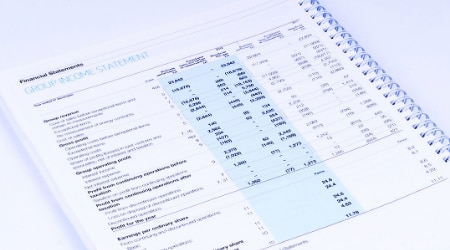In other words, you record transactions under the individual General Ledger accounts to which such transactions relate. Further, these transactions are recorded based on the Duality Principle of Accounting.
As per this principle, there are at least two accounts involved when a particular transaction takes place. Further, the Duality Principle is expressed in terms of the below accounting equation.
Assets = Liabilities + Capital
This equation states that the assets of your business are always equal to the sum of the owner’s capital and the claims of the outsiders.
Thus, each transaction of your business takes place in such a way that this equality between the two sides of the accounting equation is always maintained. That is, at any point in time, the resources or the assets of your business must equate to the claims of owners and outsiders.
This is because owners and the outsiders are the ones who go in for providing such resources.
Classification of General Ledgers
Typically, there are three different types of Ledgers that you can prepare. These include:
Debtors Ledger or Sales Ledgers
Sales Ledger or Debtors Ledger is one of the three types of Ledgers that you prepare as a firm or a business entity. It records all the transactions that take place between you and your debtors. Here, debtors are nothing but the business entities to whom you have sold goods that you manufacture.
Thus, it contains a collection of accounts associated with your customers. Further, it showcases the amount your customers owe to you or the amount that is yet to be received from them.
In addition to this, it also records the sales return. Here, Sales Return refers to the goods that your customers return.
Thus, your Sales Ledger tracks detailed information about goods sold to your customers. So following are the details recorded in your sales ledger.
- Date of Sale
- Type of goods sold
- Amount of goods
- Name of the customers
- Tax Details, etc.
Furthermore, you can refer back to the details with regards to the sales made in case you need to do so in the future. Likewise, Sales Ledger also helps you to keep track of payments received and yet to be received from your customers.
Creditors Ledger or Purchases Ledger
Purchases Ledger is a Ledger that records all transactions related to purchases that your business entity makes. In other words, Purchase Ledger records all the transactions taking place between you and your suppliers.
Therefore, a Purchase Ledger or a Creditors Ledger showcases the amount you pay to your suppliers or the amount yet to be paid for the purchases made.
Thus, a purchase ledger helps you to keep a track of the purchases your business entity makes. This way you can make sure that you have enough purchases for the smooth manufacturing of the products.
Further, the purchase ledger helps you to know the amount you pay to the creditors as well as the outstanding amount. Besides this, you can refer back to the purchase details in case you need to so in the future.
Finally, the purchase ledger also helps you to know the following.
- Type and quantity of goods you purchased
- List of suppliers, and
- Purchases involving huge sums of money
General Ledger
A General Ledger is a Ledger that contains all the ledger accounts other than sales and purchases accounts. Therefore, you need to prepare various sub-ledgers providing the requisite details to prepare a single ledger termed as General Ledger.
So, General Ledger contains information related to different accounts. These accounts provide information that helps you in preparing your business’ financial statements. These financial statements include the income statement and balance sheet.
Furthermore, the information recorded in General Ledger is divided based on the type of accounts. These General Ledger Accounts include the following.
- Assets
- Liabilities
- Owner’s Equity
- Revenues and Gains
- Expenses or Losses
Benefits of General Ledger
A General Ledger is one of the important records in the system of accounting. It is prepared after you pass journal entries in the Books of Original Entry (Journal).
As mentioned earlier, you record various transactions in Ledger under separate account heads. These include Sales Account, Purchases Account, Inventories Account, etc.
Thus, such a record helps you in tracking various transactions related to specific account heads. Further, it also helps in speeding up the process of preparing books of accounts.
Hence, thus General Ledger Accounting helps you as a business in a number of ways.
Preparation of Financial Statements
You cannot prepare financial statements like Trading and P&L and balance sheets without General Ledger. This is because the detailed accounts in General Ledger help you in preparing the trial balance.
Further, the Trial Balance ensures that the information contained in your Ledger Accounts is accurate. Therefore, you can further use the accurate amounts showcased in your Trial Balance to prepare the financial statements. These statements include the income statement and the balance sheet.
So, preparing such financial statements becomes challenging if you do not prepare General Ledger. Thus, you as a business owner cannot evaluate your company’s liquidity, profitability, and overall financial position.
Final Position of Specific Accounts
You record the financial transactions under separate account heads in your company’s General Ledger.
Furthermore, at the end of the accounting period, you close these Ledger Accounts. You do this as a result of balancing the debit and the credit sides of such accounts.
Thus, you get an understanding of your company’s position with regards to debtors, creditors, expenses, revenues, incomes, etc. For example, the outstanding payments against suppliers, payments to be collected from customers, etc.
Easy Audit
You may choose to conduct an internal audit or get your accounts audited by an accounting professional. Therefore, General Ledger acts as an important financial record that is audited whatever may be the case.
This is because General Ledger Accounts records transactions under various account heads. Further, it provides detailed information with regards to such accounts.
Thus, it may help you to undertake the audit smoothly. This is because you can easily verify if various accounting items are classified and recorded accurately with the help of the given information.
Furthermore, General Ledger Accounting also helps you to spot material misstatements with regard to various accounts. Also, the accounting professional auditing your company accounts may ask for sales receipts, purchase invoices, etc. They may do so in order to check if proper amounts are charged.
Thus, all of this becomes easy when you prepare proper ledger accounts.
Easy Tax Filing
General Ledger Accounts help you to record details of transactions that your business undertakes over an accounting period.
For example, your sales ledger contains information like tax information, invoice number, goods sold, date of sale, customer details, etc.
Likewise, the revenue and expense accounts give an accurate view of the incomes earned or the expenses incurred. Thus, these details come in handy as you do not have to look for invoices or bank statements at the time of filing tax returns.
This is because the details recorded in your ledger accounts provide sufficient details to file your tax returns.
Identification of Unusual Transactions
A number of transactions happen during an accounting period. Thus, it becomes difficult for you to find unwanted transactions if you do not categorize the transactions in General Ledger.
Further, this could become a cause of concern for you as a business entity. Say, for instance, you were overcharged for an item you purchased. Now, it becomes challenging for you to identify this transaction if the Ledger Accounts are not prepared. This is because there are a number of transactions that occur during an accounting period.
Assessment of Company’s Financial Health
General Ledger Accounts are the basis on which you prepare Trial Balance. From Trial Balance, you are able to prepare statements of final accounts. These include the income statement and balance sheet. Such financial statements help you in knowing the profitability and overall financial position of your business.
In other words, you get a clear view of your business’s capacity to generate profits and the resources you have to meet outsider’s claims.
Control Accounts
A Control Account is nothing but a General Ledger Account where you record only the summarized information regarding a specific account. It does not contain detailed information related to such an account. Thus, you need to refer to a related subsidiary ledger to know the details of such a control account.
Here, a Subsidiary Ledger is a ledger recording detailed information of the related Control Account. Accounts Receivable is most commonly used as a General Ledger Control Account.
Thus, you simply record a summary of various balances in accounts receivable when you use it as a Control Account. These include a summary of:
- Credit Sales
- Sales Returns
- Cash Collected from Customers
- Discounts Given During an Accounting Period
Accordingly, you do not record details of each sales transaction undertaken with various customers in the Accounts Receivable Control Account.
But, you can refer to the related subsidiary account if you need to check any detail regarding the sales made to a specific customer.
Say, the following are the credit sales undertaken during an accounting period.


